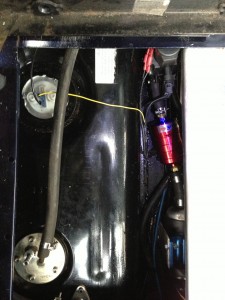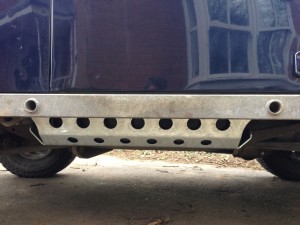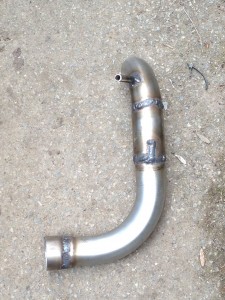 Finished the fuel system this weekend, well it might get a few more tweaks yet but it’s all working now at least. I may well end up changing the fuel pump for a higher throughput version and having a pre-filter for each tank rather than a single pre-filter at some point.
Finished the fuel system this weekend, well it might get a few more tweaks yet but it’s all working now at least. I may well end up changing the fuel pump for a higher throughput version and having a pre-filter for each tank rather than a single pre-filter at some point.
The picture on the left shows the under seat fuel tank and to the right of it the changeover valve (top right), filter and pump.
The pipe work was all fitted yesterday and today I made the mounting brackets for the valve and pump and wired it all up. I had to cut into the chassis loom to break the feed to the fuel gauge and wire it through the valve and the fuel pump wires needed extending as the fuel pump is now further forward than it was.
The extra fitting on the pickup plate is for the breather pipe and valve to be connected to as we’re not using a fuel cap with a breather.
To put some fuel into the auxiliary tank and do a basic leak test I decided to disconnect the return pipe from the changeover valve and connect it to the vent connector on the top of the tank. That way the pump would pump from the main (rear) tank, through the engine and into the auxiliary tank. What I hadn’t thought about was that pumping it in through the vent meant there was no where for the air to go… The tank and the filler pipework was all nicely pressurised and when I took the filler cap off it went with a loud pop 🙂 Not sure what pressure it had got up to but the metal tank had expanded ! Fortunately no harm done and, on the plus side, I know now that the custom pipework I made up for the filler is all air tight.
The changeover valve works well, changing the fuel gauge and the fuel pump/return simultaneously, controlled by a switch on the dash. With the engine running you can switch from one tank to the other without the engine missing a beat. The sender on the auxiliary tank seems to match the fuel gauge too giving a reasonably accurate picture of the fuel level.



